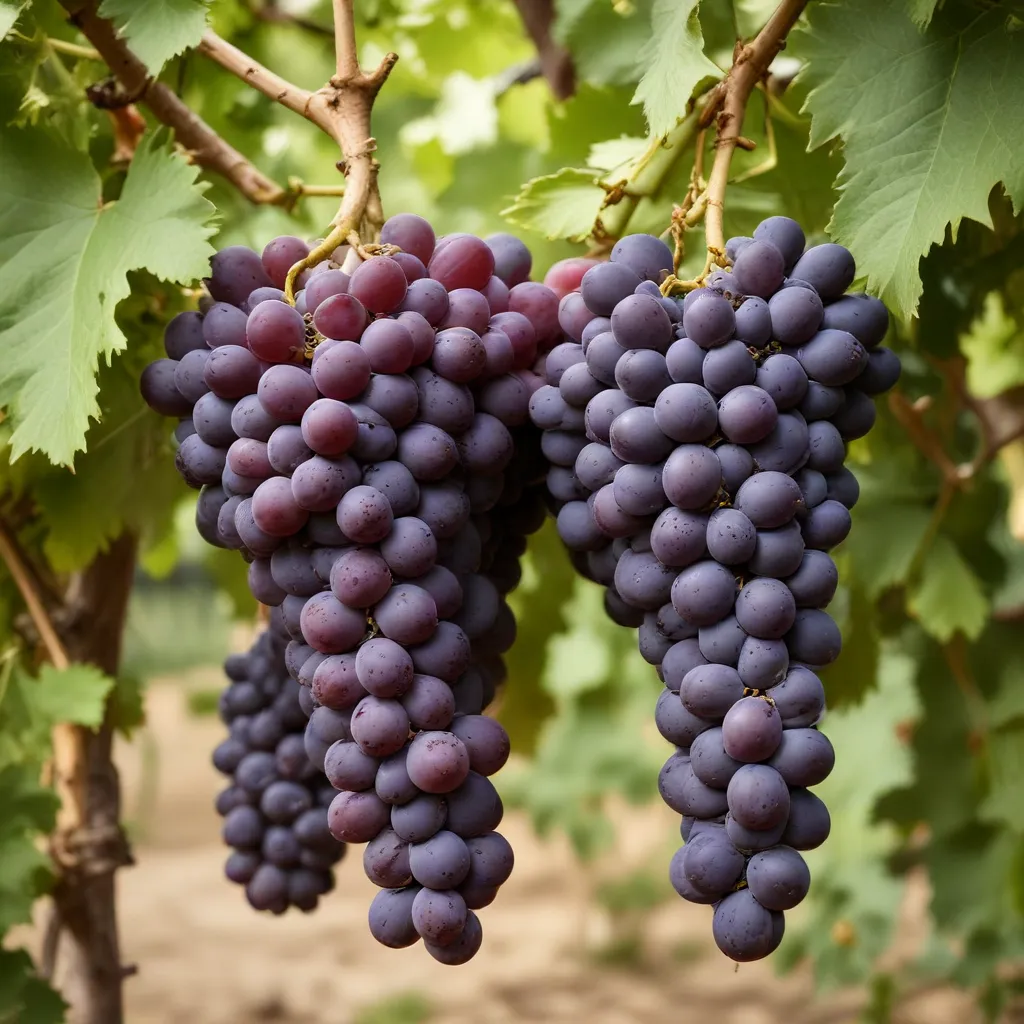
The diverse grape varieties found in Armenia offer a unique opportunity to study the biochemical composition of both grapes and the wines produced from them. Armenia’s autochthonous, modern cultivars, and wild grape populations thrive in the country’s distinct climatic zones, resulting in a wide array of potential wine styles. One such variety, the Nrneni grape, was created by crossing Alicante Bouschet, Cabernet Sauvignon, and Saperavi. This unique combination yields grapes with an intense red pulp and juice, making it a fascinating subject for in-depth analysis.
Grape Biochemical Composition
Grape Cultivars
The Nrneni grape variety, developed through selective breeding, is just one example of Armenia’s diverse grape heritage. The country’s autochthonous grapes, as well as modern cultivars and wild grape populations, each contribute to the rich tapestry of grape biochemistry found within the region.
Grape Growing Regions
Armenia’s climatic zones play a crucial role in shaping the biochemical profiles of its grapes. The Ararat Valley, where the Nrneni grapes were harvested for this study, offers an ideal terroir for grape cultivation, with the grapes reaching full technical maturity by the end of September.
Grape Maturity Stages
As grapes progress through their development, they undergo a series of biochemical changes that ultimately determine the quality and characteristics of the resulting wine. Tracking the evolution of these compounds at different maturity stages is essential for understanding their impact on the final product.
Wine Production Process
Grape Harvesting
For the Nrneni grape study, the grapes were hand-harvested at the end of September, ensuring they had reached full technical maturity. This attention to timing is crucial, as it allows for the optimal expression of the grape’s inherent biochemical profile.
Grape Crushing and Destemming
After harvesting, the grapes were processed using the classic red winemaking method, involving crushing and destemming. This initial step in the winemaking process sets the stage for the subsequent fermentation and aging, during which a multitude of biochemical reactions will take place.
Fermentation
During the fermentation process, the grape must undergoes a series of transformations, with yeasts converting the sugars into alcohol and a variety of other compounds. This stage is crucial for the development of the wine’s sensory properties, as well as its potential health benefits.
Biochemical Composition of Grapes
Primary Metabolites
Grapes are rich in primary metabolites, such as sugars, organic acids, and amino acids, which play essential roles in the growth and development of the plant. These compounds also contribute to the wine’s flavor, acidity, and overall structure.
Secondary Metabolites
Grapes are also excellent sources of secondary metabolites, particularly polyphenolic compounds like anthocyanins, flavonoids, and stilbenes. These bioactive compounds not only contribute to the wine’s color, aroma, and taste but also offer potential health benefits.
Volatile Compounds
The volatile compounds present in grapes and wine can have a significant impact on the wine’s aroma profile. Understanding the formation and evolution of these compounds during the winemaking process is crucial for optimizing the wine’s sensory characteristics.
Impact of Biochemical Composition on Wine Quality
Sensory Characteristics
The biochemical composition of grapes and the subsequent transformations that occur during winemaking directly influence the wine’s sensory properties, such as color, aroma, and taste. Analyzing these connections is essential for producing high-quality wines that cater to the preferences of discerning consumers.
Aging Potential
The balance and complexity of a wine’s biochemical constituents, particularly its polyphenols and organic acids, can greatly impact its aging potential. Studying these factors helps winemakers make informed decisions about the optimal cellaring conditions and timing for each wine.
Health Benefits
The presence of beneficial bioactive compounds, such as antioxidants, in grapes and wine has been the subject of increasing interest. Evaluating the levels of these compounds can shed light on the potential health benefits associated with moderate wine consumption.
Analytical Techniques
Chromatography
Techniques like liquid chromatography (LC) and gas chromatography (GC) have been instrumental in the identification and quantification of the various organic acids, polyphenols, and volatile compounds present in grapes and wine.
Spectroscopy
Spectrophotometric methods, such as the photocalorimetric technique used in the Nrneni grape study, allow for the determination of total phenolic compounds and other key biochemical markers in grape and wine samples.
Mass Spectrometry
The combination of chromatographic separation and mass spectrometric detection, as demonstrated in the HS-SPME-GC-MS analysis of wine volatiles, provides a powerful tool for the comprehensive profiling of a wine’s chemical composition.
Factors Influencing Grape and Wine Biochemistry
Climate and Terroir
The unique climatic conditions and soil characteristics of a given region can have a profound impact on the biochemical composition of the grapes and, consequently, the wines produced from them. Studying the interplay between these factors is crucial for understanding regional wine styles.
Viticultural Practices
Vineyard management techniques, such as leaf removal, can also influence the biochemical attributes of grapes and wines. The strategic manipulation of canopy structure and microclimate can be used to fine-tune the desired sensory and compositional profiles.
Winemaking Techniques
The choices made during the winemaking process, from fermentation conditions to aging methods, can further shape the biochemical evolution of the wine. Optimizing these techniques is essential for unlocking the full potential of the grape’s inherent biochemistry.
By delving into the biochemical composition of grapes and wines from Armenia, we can gain invaluable insights into the unique terroir and viticultural practices that shape the region’s oenological landscape. The Nrneni grape variety, with its intense color and rich polyphenolic content, is just one example of the diverse and fascinating grape resources that Armenia has to offer. Through continued research and exploration, we can uncover the full depth and complexity of Armenia’s wine heritage, ultimately enhancing the appreciation and enjoyment of these remarkable culinary delights.
